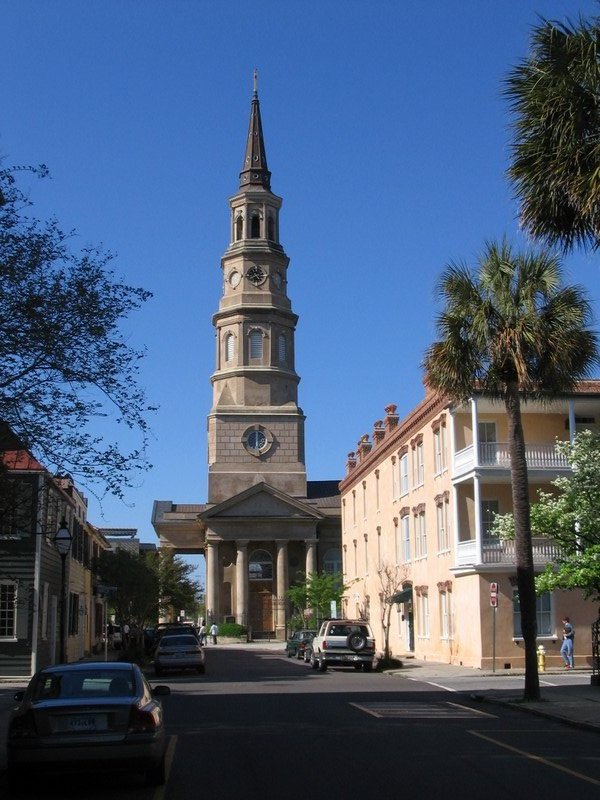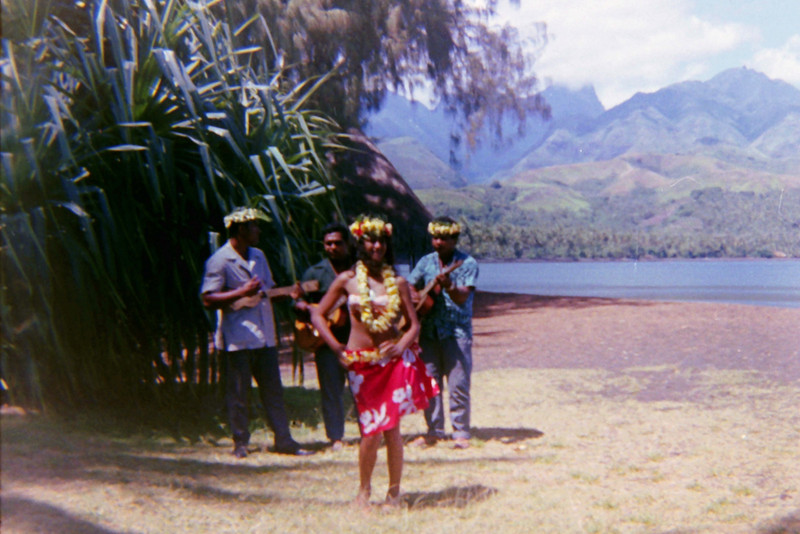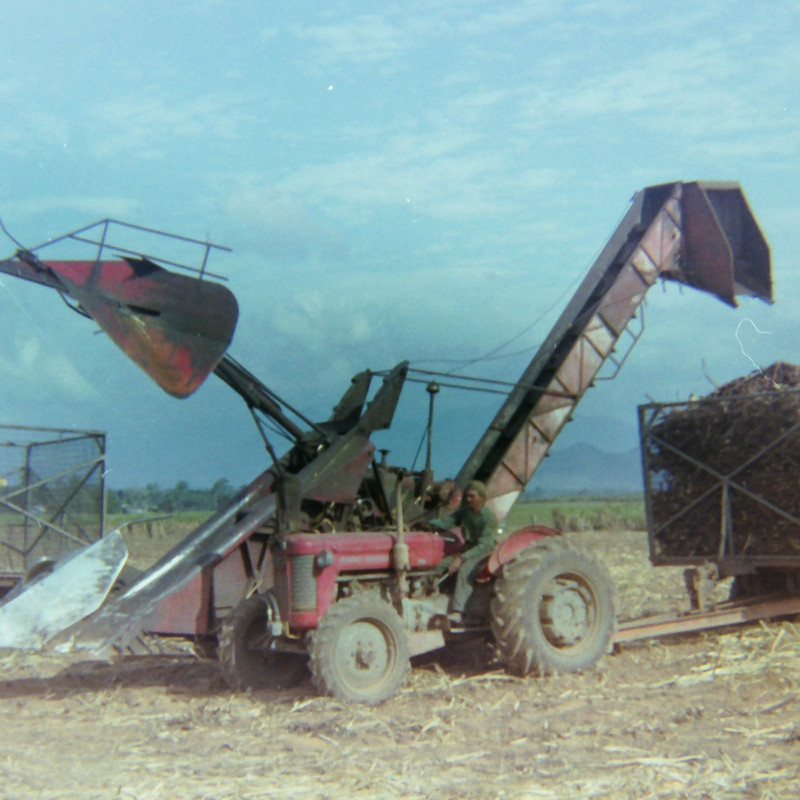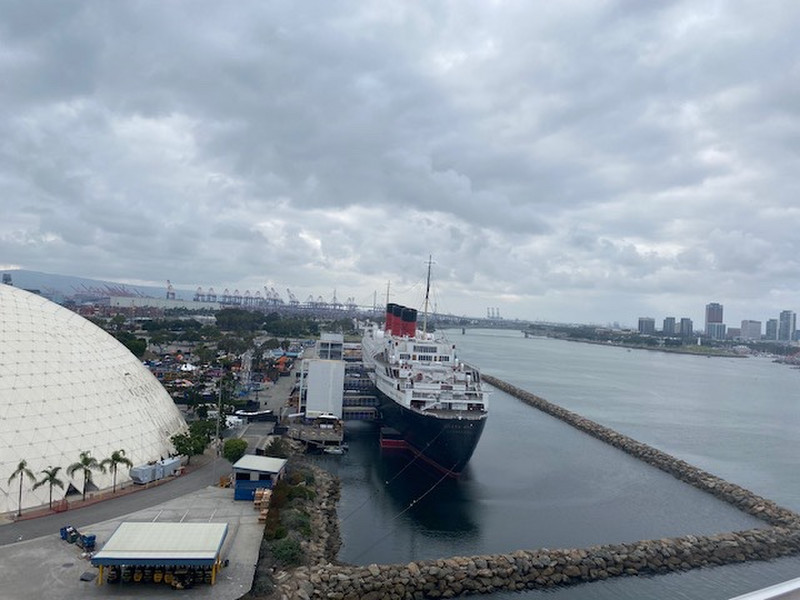St. Philips Church, Charleston, SC. Constructed: ca. 1836 and the spire added in 1848. 142 Church Street Charleston Historic District. National Register of Historic Places 73001695. IMG_4916
Charleston, South Carolina, could easily a favorite city. The historic houses, gardens, the Market, Fort Sumter and the sense of history at every corner all contribute to a most agreeable ambiance. Susa and I had visited Charleston in 1989. Now our son and daughter were along with us. After Charleston, we would be taking our son for a look at the University of South Carolina.
To reach Charleston, we drove from Northern Virginia in one day. A long day to be sure, but traffic was not bad along the Interstate 95 corridor. We reached the turnoff for Charleston at dusk, had dinner at a and reached the city after rush hour had subsided. We checked into the Marriott SpringHill Suites hotel, just across the Ashley River from historic downtown Charleston. The location was very convenient for driving. US Highway 17 in one direction from the hotel, or US Highway 30 in the other, both led across the Ashley River directly into downtown Charleston. We spent some time in the evening driving about and checking routes and destinations for the following day and made a preliminary stop at the Charleston Visitor Reception Center.
Charleston Visitor Reception and Transportation Center. Originally built in 1856 as Deans Warehouse. Adaptive reuse in 1991. 375 Meeting Street. William Aiken House and Associated Railroad Structures. National Register of Historic Places 66000698. IMG_4859
Charleston on Sunday began at the Visitor Center. We again drove across the Ashley River and parked all day in the Visitor Center parking lot. Ample parking is offered here and the visitor can use it as a base for exploration. The Visitor Center is the former railway warehouse dating from 1856. The long shed now houses a series of informative displays on the history of Charleston, local amenities, tours, and a gift shop. Across the street is the Charleston Museum. On display in front of the museum is a replica of the CSS Hunley, one of the first successful submarines. (It sank a Federal warship in Charleston harbor in 1864, but later itself sank with all hands.) Behind the Museum is the historic House (1818/1858), open to the public and operated by the Historic Charleston Foundation.
Motorized trolleys operated by CARTA, the local transit authority, form the core of public transportation around the old town. They depart from the Visitor Center and follow convenient schedules along King and and Meeting Streets, passing Marion Square Park (with a statue of John C. Calhoun), the College of Charleston, popular boutiques and trendy stores in the King Street shopping district,
Replica of the CSS Hunley Civil War submarine at the Charleston Museum. The Hunley had a crew of 21, a captain and crew who manually propelled the vessel. IMG_4866
The Battery is a beautiful assembly of pastel colored historic houses and parkland on the very tip of Charleston at the confluence of the Ashley and Cooper Rivers. Most of the houses are residences, a few are museums, and some are operated as Bed and Breakfasts. The area is subject to strict preservation ordinances. A house more than fifty years old must have special permission to be altered or painted differently from the original design. South Battery Street fronts on White Point Garden park and its palmetto trees.
A walk along the seawall promenade facing East Battery Street and known as the High Battery, enables one to enjoy the breeze and look out over the harbor and the Cooper River to Fort Sumter in the distance. Along East Battery Street is the House, built in 1825 and one of the first residences along the High Battery. The house is open to the public and is one of the historic house museums in the city. Nearby is the pink Palmer Home (1848), now a B&B. The pink color has earned
Charleston mansion dating from 1835, now used as offices.









